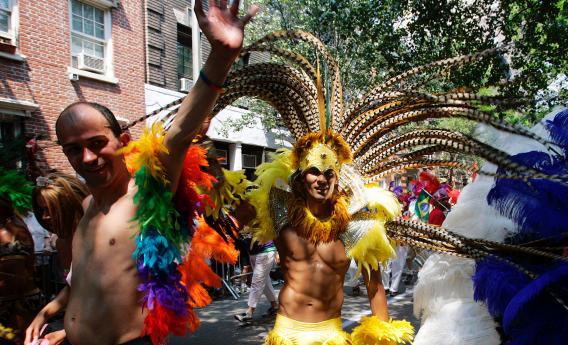Earlier this month, the Supreme Court refused to review the Colorado Court of Appeals’ ruling in a high-profile case involving anti-abortion protests, thereby allowing the lower court’s judgment to stand. According to that judgment, Colorado is free to ban protests that include “graphic” images of aborted fetuses where they might be seen by “children under 12,” on the logic that the children might be “disturbed.” Anyone who violates the ban may be arrested and jailed.
As my colleague Emily Bazelon notes, the Supreme Court’s refusal to reconsider the lower court’s ruling is truly puzzling: Rarely does any court get the First Amendment as completely and totally wrong as the appeals court has here. Under U.S. jurisprudence, political speech is given the highest degree of protection, and any censorship must be “content-neutral”—that is, a regulation can’t target a specific viewpoint or form of expression. Yet this ban directly targets anti-abortion protesters and their most effective form of speech. By censoring the protesters’ images, the ban is effectively muffling not only their manner of expression but also their underlying beliefs.
That the ban will remain standing is bad news for anyone who values free speech. But it’s especially worrisome for the gay rights movement. The rationale used by the lower court—that “graphic” expression potentially “disturbing” to children can be banned—could easily be applied to gay rights marches. Under the disturbing-to-children principle, a broad array of tools used in pro-gay demonstrations, from sexualized dancing to images of people with AIDS to raucous chants, could be suppressed by the state.
To understand the threat such a principle might pose, consider a typical Pride parade. These demonstrations have a dual purpose: They simultaneously celebrate the LGBT community and draw attention to its greatest challenges. Many marchers take part in such events while wearing scanty clothing so as to exult in their sexual liberty. Others dance wildly or even lewdly, indicating buoyant contentment with a public display of their gay selves. These marchers aren’t fully nude or engaging in a sex act; they’re merely celebrating themselves and their community, symbolically tossing off the shackles of the closet to embrace the joyous liberty of an open, honest life.
But Pride takes place on busy city streets, and kids are frequently in attendance. By the newly minted disturbing-to-children doctrine, any state could prohibit a “graphic” display of sexuality, such as lascivious dancing. Legislators would need only to prove that such acts “disturb” children—and anti-gay state representatives could surely make such a case. The basic purpose of Pride festivities—a celebration of self—would suddenly be stifled and sterilized, all in the name of shielding children’s innocence.
And what of Pride’s more political dimensions? In the early days of the AIDS crisis, protesters frequently carried pictures of their dying loved ones as they marched. These photographs were disturbing by design, meant to rouse the public from its complacency, and they often displayed images of emaciated men in the late stages of the illness. They have long been AIDS activists’ most successful tool in gaining sympathy and provoking action—yet the disturbing-to-children rationale could easily strike them from the streets.
To best grasp the potentially catastrophic impact of the lower court’s ruling on gay rights, however, you have to look back further than AIDS to the dawn of the modern gay rights movement. In the 1960s and ’70s, the mere notion of homosexuality was strange, scary, and threatening to many Americans, children and adults alike. Thus, any public display of gay identity or support could be considered “disturbing,” and banned as such. The mere sight of two men kissing would have agitated even open-minded Americans in those decades. But those protests helped to normalize homosexuality, bringing each generation closer to tolerance and acceptance. Had the pioneers of gay rights been silenced under the flimsy rationale of protecting children, the last half-century of progress might have been impossible. Instead, the gay rights movement has become a mainstream success in America today.
If the link between the court’s ruling and the gay rights movement seems tenuous, just look to Russia to see how slippery the disturbing-to-children slope can be. A new Putin-promoted law in Russia outlaws “homosexuality propaganda” (any outward display of homosexuality, really) on the basis that children might see it. That’s an almost perfect reflection of the appeals court’s rationale in suppressing anti-abortion protesters—and a chilling glimpse into the logical conclusion of such censorship. Some of us may hate the speech and ideas promulgated by anti-abortion protesters, but the First Amendment principles that protect them are the very same ones that have brought the gay rights movement its greatest triumphs.
